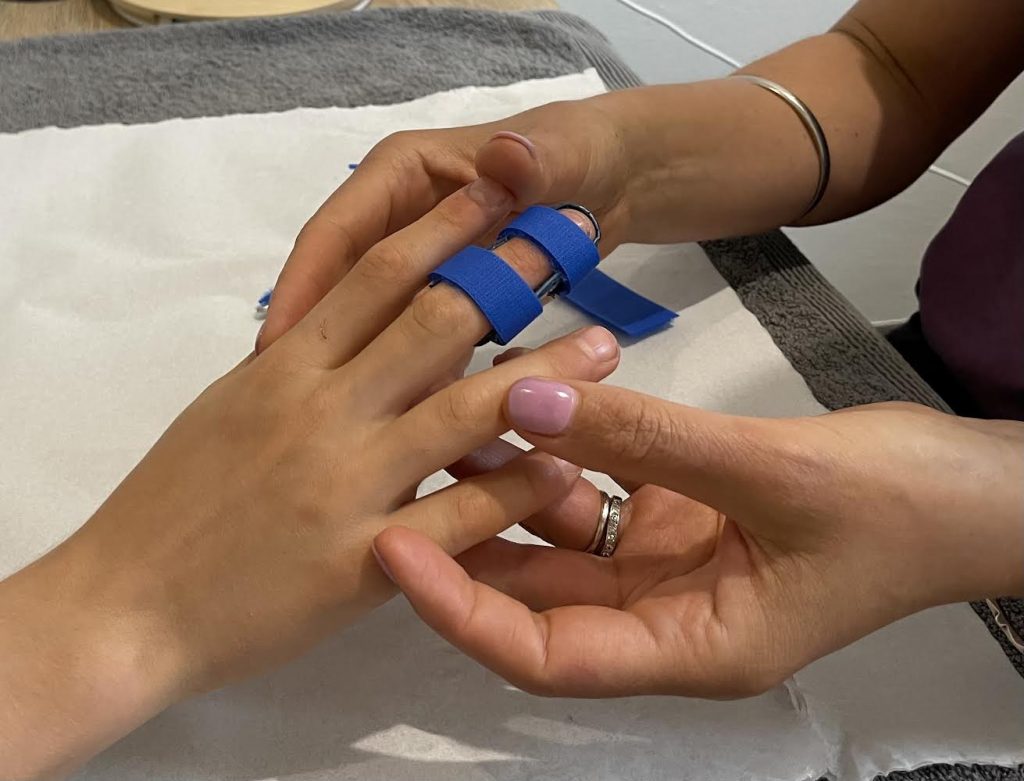HELP, I CAN’T STRAIGHTEN MY FINGER TIP!
A dropping finger injury is commonly known as Mallet Finger
Finger tip injuries can happen in many ways, while playing sport, at work or even when doing the house work! A direct hit to the tip of your finger often occurs when playing ball sports such as basketball, football or netball. Sometimes this can lead to a dropping finger tip, which means you cannot straighten your finger tip using your muscles. Often people think that their finger is “dislocated” and will get better on it’s own, but unfortunately this is not the case. When the finger tip is dropping this indicates that the tendon that straightens your finger tip (Extensor Digitorum Communis) has been injured and is not working properly. This type of injury is called a “Mallet Finger.”
Two types of this condition
There are two types of Mallet Finger injuries: a Bony Mallet Finger injury and a Tendinous Mallet Finger injury. A Bony Mallet Finger injury occurs when the tendon has pulled off the bone resulting in a small chip fracture, so on an X-ray a small chip fracture of bone is visible. The second type of Mallet Finger injury is called a Tendinous Mallet Finger, which occurs when the tendon itself snaps, so on an X-ray there is no small chip fracture visible.

Treatment options
The good news is that both types of Mallet Finger injuries respond really well to conservative management and most of these injuries do not require surgery. If you notice your finger tip is dropping after a direct knock, you will need to see a Hand Therapist immediately. Your Hand Therapist will fabricate a good fitting thermoplastic splint which will allow your extensor tendon to heal. You will also need to get an X-ray to determine if there is a fracture present and to assess if the joint is stable and surgery is not required. The X-ray will enable your Hand Therapist to assess which type of Mallet Finger injury you have sustained. The type of Mallet Finger injury will determine how long you will need to wear your splint for.

After 6-8 weeks of wearing your thermoplastic finger splint (strictly all the time) your Hand Therapist will start gentle finger motion exercises and wean you out of your splint.
Keeping your finger tip completely straight and starting treatment immediately results in the best outcomes. After 12 weeks of treatment your tendon will have fully recovered and you will be able to return to all sports, work and daily activities.
